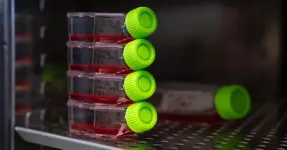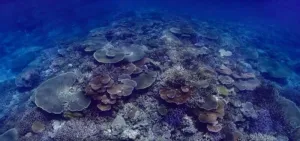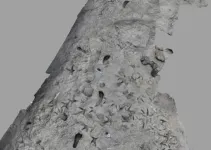Disease severity staging system for NOTCH3-associated small vessel disease, including CADASIL
JAMA Neurology
2024-11-29
(Press-News.org)
About The Study: The findings of this study suggest the NOTCH3-associated small vessel disease (NOTCH3-SVD) staging system will help to better harmonize NOTCH3-SVD and cerebral autosomal dominant arteriopathy with subcortical infarcts and leukoencephalopathy (CADASIL) cohort studies and registries; may improve individualized disease counseling, monitoring, and clinical management; and may facilitate patient stratification in clinical trials.
Corresponding Authors: To contact the corresponding authors, email Gido Gravesteijn, MD, PhD (g.gravesteijn@lumc.nl) and Saskia A. J. Lesnik Oberstein, MD, PhD (lesnik@lumc.nl).
To access the embargoed study: Visit our For The Media website at this link https://media.jamanetwork.com/
(doi:10.1001/jamaneurol.2024.4487)
Editor’s Note: Please see the article for additional information, including other authors, author contributions and affiliations, conflict of interest and financial disclosures, and funding and support.
Embed this link to provide your readers free access to the full-text article This link will be live at the embargo time https://jamanetwork.com/journals/jamaneurology/fullarticle/10.1001/jamaneurol.2024.4487?guestAccessKey=1159cb3b-9fd9-47ed-89c3-ffc0051dcb01&utm_source=for_the_media&utm_medium=referral&utm_campaign=ftm_links&utm_content=tfl&utm_term=112924
END
ELSE PRESS RELEASES FROM THIS DATE:
2024-11-29
A new study led by King’s College London has provided further evidence that the deaths of 350 African elephants in Botswana during 2020 were the result of drinking from water holes where toxic algae populations had exploded due to climate change.
The lead author of the report says their analysis shows animals were very likely poisoned by watering holes where toxic blooms of blue-green algae, or cyanobacteria, had developed after a very wet year followed a very dry one.
Davide Lomeo, a PhD student in the Department of Geography at King’s College London and co-supervised by Plymouth Marine Laboratory (PML) and ...
2024-11-29
Killer whales can feed on marine mammals, turtles, and fish. In the Gulf of California, a pod might have picked up new skills that help them hunt whale sharks – the world’s largest fish, growing up to 18 meters long.
Whale sharks feed at aggregation sites in the Gulf of California, sometimes while they are still young and smaller. During this life-stage, they are more vulnerable to predation, and anecdotal evidence suggests orcas could be hunting them. Now, researchers in Mexico have reported four separate hunting events.
“We show how orcas displayed a collaboratively hunting technique on whale sharks, characterized by ...
2024-11-29
UNDER STRICT EMBARGO UNTIL 6:30 PM November 28, 2024:
A recent major review of data published by the Lancet and led by Emory sports cardiologist Jonathan Kim, MD, shows that Black athletes are approximately five times more likely to experience sudden cardiac arrest (SCA) and sudden cardiac death (SCD) compared to White athletes, despite some evidence of a decline in rates of SCD overall. SCA and SCD have historically been a leading cause of mortality among athletes, particularly those involved in high-intensity sports.
The disparities in SCA/D rates highlights the need for increased research into the social determinants of health in younger athletes, a topic that remains ...
2024-11-28
Researchers at University of California San Diego analyzed the genomes of hundreds of malaria parasites to determine which genetic variants are most likely to confer drug resistance. The findings, published in Science, could help scientists use machine learning to predict antimalarial drug resistance and more effectively prioritize the most promising experimental treatments for further development. The approach could also help predict treatment resistance in other infectious diseases, and even cancer.
“A lot of drug resistance research can only look at one chemical agent at a time, but what we’ve been able to do here is create a roadmap ...
2024-11-28
Coral adaptation to ocean warming and marine heatwaves will likely be overwhelmed without rapid reductions of global greenhouse gas emissions, according to an international team of scientists.
Their study, led by Dr. Liam Lachs of Newcastle University, reveals that coral heat tolerance adaptation via natural selection could keep pace with ocean warming, but only if Paris Agreement commitments are realised, limiting global warming to two degrees Celsius.
“The reality is that marine heatwaves are triggering mass coral bleaching mortality events across the world’s shallow tropical reef ecosystems, and the increasing frequency and intensity of these events ...
2024-11-28
UNDER EMBARGO UNTIL 19:00 GMT / 14:00 ET THURSDAY 28 NOVEMBER 2024
Bioinspired droplet-based systems herald a new era in biocompatible devices
Oxford University researchers have developed a set of biocompatible devices, which can replicate or surpass many electronic functions but use ions as the signal carriers.
The ‘dropletronic devices’ are made from miniature soft hydrogel droplets and can be combined to produce diodes, transistors, reconfigurable logic gates, and memory storage devices that mimic biological synapses.
The research team generated a biocompatible, dropletronic ...
2024-11-28
More than a million years ago, on a hot savannah teeming with wildlife near the shore of what would someday become Lake Turkana in Kenya, two completely different species of hominins may have passed each other as they scavenged for food.
Scientists know this because they have examined 1.5-million-year-old fossils they unearthed and have concluded they represent the first example of two sets of hominin footprints made about the same time on an ancient lake shore. The discovery will provide more insight into human evolution and how species cooperated and competed with ...
2024-11-28
In 2023, the United Nations climate conference (COP28) officially recognized the importance of agriculture in influencing and mitigating climate change. In a Policy Forum, Johan Swinnen and colleagues offer an approach to overcome challenges related to improving climate-sensitive farming practices across the globe. They discuss the importance of working with Agricultural Value Chains (AVC) by incentivizing small businesses who play an important role in the support of small- and medium-sized farms. This would involve both upstream enterprises related to seeds, fertilizer, ...
2024-11-28
The thirteen-lined ground squirrel doesn’t drink during its winter hibernation, even though systems throughout its body are crying out for water. Madeleine Junkins and colleagues now show that the squirrel suppresses the need to quench its thirst by reducing the activity of a set of neurons in highly vascularized brain structures called circumventricular organs, which act as a specialized connection point between brain, blood circulation and cerebrospinal fluid. The study by Junkins et al. helps explain how some hibernating animals ignore the powerful physiological drive to seek out water ...
2024-11-28
Newly discovered footprints show that at least two hominid species were walking through the muddy submerged edge of a lake in Kenya’s Turkana Basin at the same time, about 1.5 million years ago. The find from the famous hominid fossil site of Koobi Fora described by Kevin Hatala and colleagues provides physical evidence for the co-existence of multiple hominid lineages in the region—something that has only been inferred previously from overlapping dates for scattered fossils. Based on information on gait and stance gleaned from the footprints, Hatala et al. think that the two species were Homo erectus and Paranthropus ...
LAST 30 PRESS RELEASES:
[Press-News.org] Disease severity staging system for NOTCH3-associated small vessel disease, including CADASIL
JAMA Neurology




